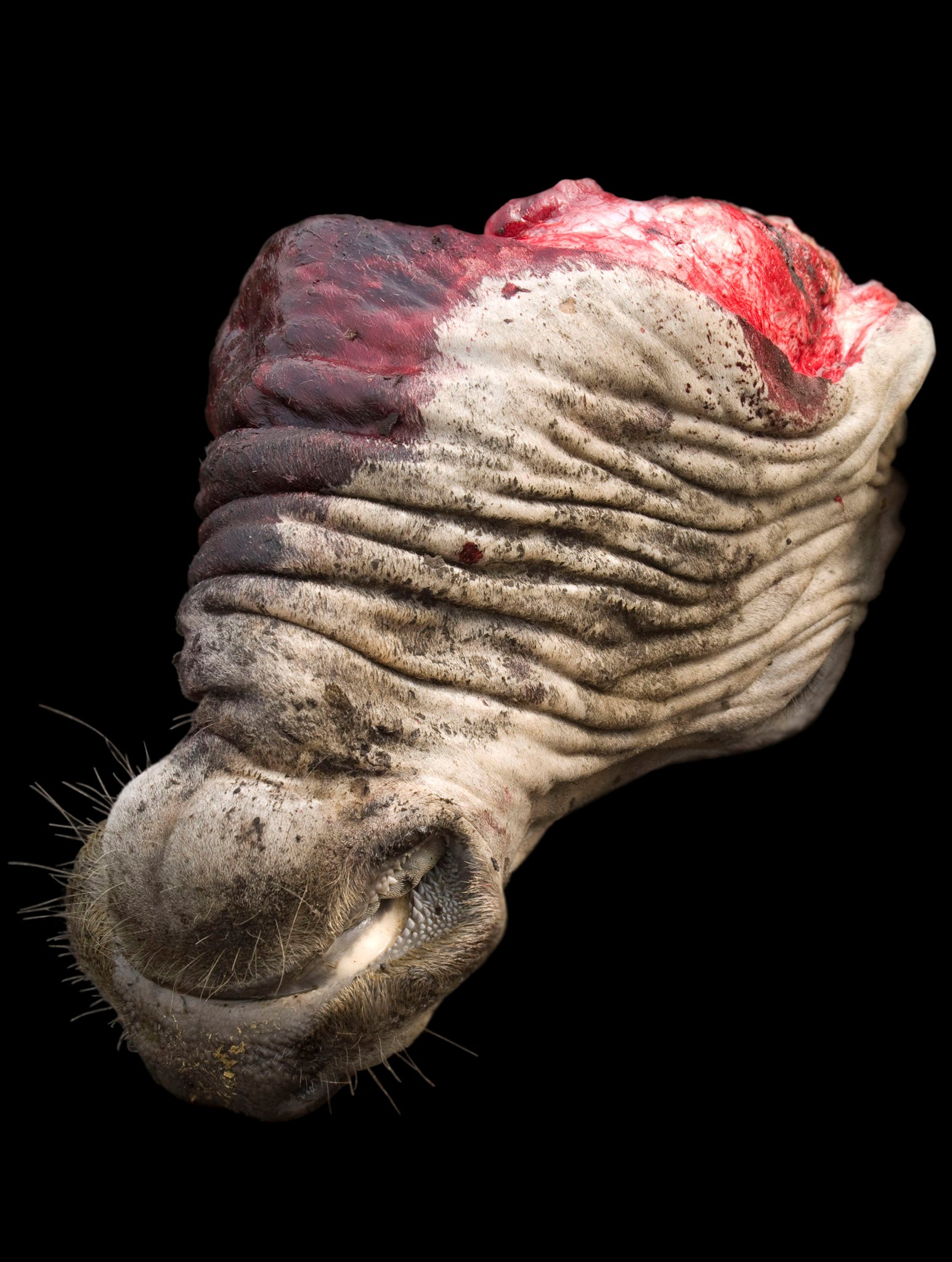Alex Van Gelder, Meat Portraits- art review: 'The overwhelming feeling is one of nausea'
Georgia O’Keefe meets the body-preserving anatomist Gunther Von Hagens

Your support helps us to tell the story
From reproductive rights to climate change to Big Tech, The Independent is on the ground when the story is developing. Whether it's investigating the financials of Elon Musk's pro-Trump PAC or producing our latest documentary, 'The A Word', which shines a light on the American women fighting for reproductive rights, we know how important it is to parse out the facts from the messaging.
At such a critical moment in US history, we need reporters on the ground. Your donation allows us to keep sending journalists to speak to both sides of the story.
The Independent is trusted by Americans across the entire political spectrum. And unlike many other quality news outlets, we choose not to lock Americans out of our reporting and analysis with paywalls. We believe quality journalism should be available to everyone, paid for by those who can afford it.
Your support makes all the difference.I have been fascinated with raw meat in art since I came across the splayed and somehow obscene hanging carcasses of Soutine’s expressionist canvases while studying A-level art. My tolerance level for blood and guts is high. However, even I, looking around this exhibition of photographs by the Belgium-born, Paris-based artist Alex Van Gelder, wanted to be sick.
“The slaughterhouse was in the open air and in front of it a small market where they would sell the still warm meat. I worked there on and off for one year producing my Meat Portraits.” These “portraits”, which implies someone is the subject of the work, were taken in Benin and focus in intense detail on the rippled, visceral, stretched, and torn texture of animal flesh. The colours are blooming and varied: sick yellow fat, dove-grey bowel, glassy red… spleen?
I am not a doctor or a butcher so it’s often hard to identify precisely what these internal organs are, now estranged from their original functions and recast as aesthetic objects. Indeed, many elements of these photographs are beautiful, tender, voluptuous. Van Gelder plays with the forces of attraction and repulsion, but the overwhelming feeling is one of nausea. They are truly disgusting.
Why? Is it the human instinct to baulk at reminders of death? Horror at the suggestion that inside we too are just this: a mass of squiggly tubes, which can be tossed into a bucket and sold as scraps for dogs? Van Gelder is mysterious about his identity; his age isn’t revealed. His previous projects include photographing Louise Bourgeois’ fascinating, gnarled hands during the last year of her life.
Meat Portrait #016 is perhaps the most eroticized image, although there are plenty of openings, holes, and suggestive curves. It shows the back of a furry, spotted creature – perhaps a leopard? – which has been cut down the length of its spine so that the fur opens like a flower to reveal a layered, astonishingly coloured interior. The outer flesh is a delicate creamy pink, followed by a rich maroon. At the centre, there is a yellow slit, which is obviously reminiscent of the vagina. This is Georgia O’Keefe meets the body-preserving anatomist Gunther Von Hagens.
Meat Portrait #016 is one of the more successful images; less successful are the ones that seem to revel in a kind of death voyeurism for its own sake. Meat Portrait #018 shows a gratuitously arranged pair of eyeballs and what appears to be a brain, its connecting tubes cut loose, on a blood-stained surface. The eyes are cartoonish: googly and absurd. The image is childish and cruel.
The second room of the exhibition is similarly graphic and doesn’t work as well. There are bits of mangled face and jaw bones, and a series called Painted Paint, which shows what looks like metal paint cans filled with a violently bright red blood, organs bobbing to the surface.
Van Gelder has a wonderful sensitivity to form in nature, but more subtlety would have been effective.
10 Jan – 8 Feb, Hauser and Wirth, London
Join our commenting forum
Join thought-provoking conversations, follow other Independent readers and see their replies
Comments